There are different types of cerebral palsy
There are many different types of cerebral palsy (CP), which vary in the parts of the body that are affected, the type of impairment and the severity of mobility limitations.
Quadriplegia affects all 4 limbs (arms and legs), diplegia affects 2 limbs (typically both legs) and hemiplegia, or unilateral CP affects one arm and one leg on the same side of the body.1
The severity of mobility limitations in cerebral palsy can differ greatly from one child to the next.
Each child with CP is unique, with varying abilities and disabilities.
Nonetheless, severity can be generally classified depending on the type
of motor function impairment and the part of the body that is mostly affected. Motor symptoms of cerebral palsy can be divided depending on the location of the injury to the brain.
The following illustration shows the different syndromes associated with spastic and athetoid cerebral palsy.
Motor syndromes of cerebral palsy
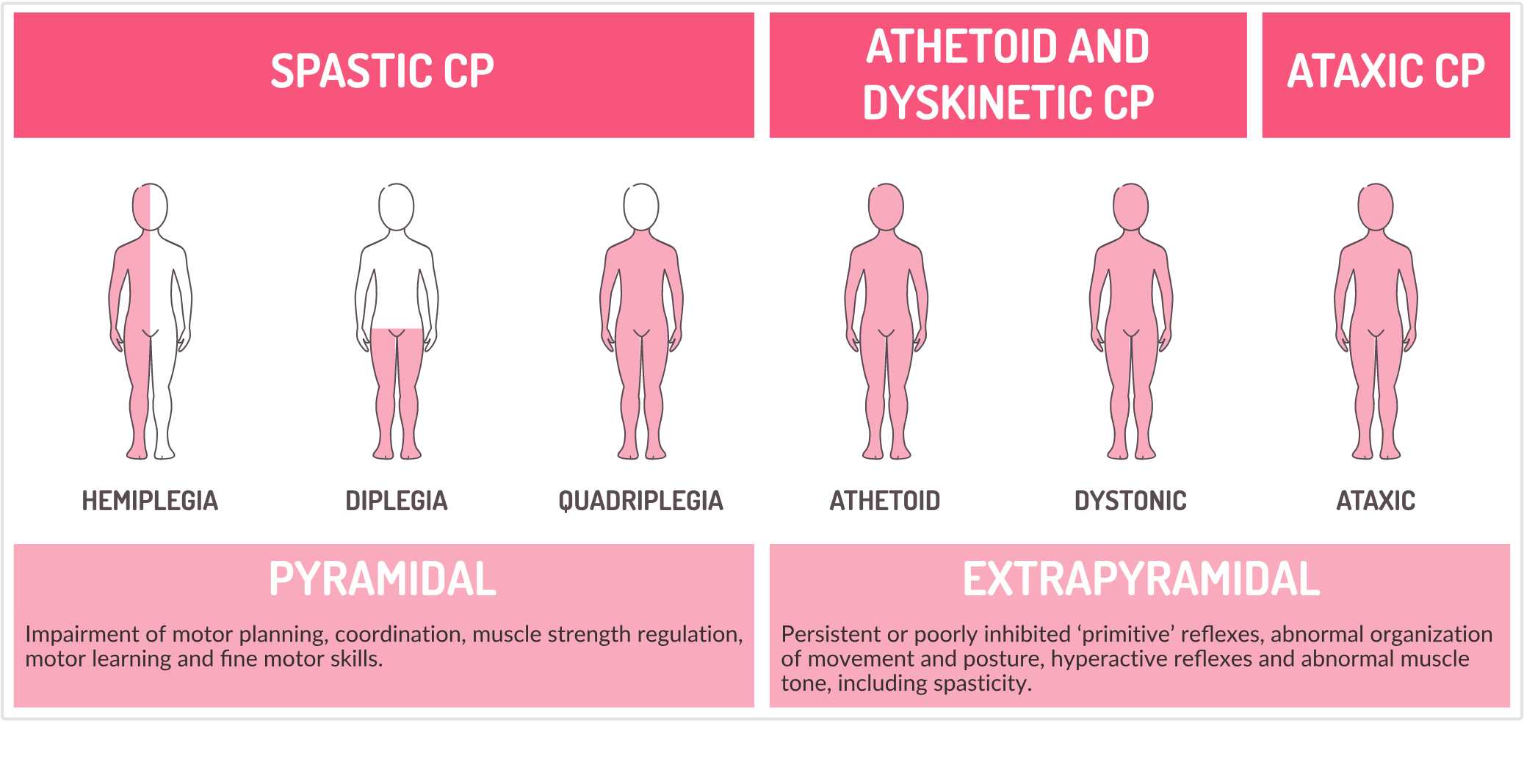
The severity of CP mobility limitations can also be categorized into 5 different levels,
according to the Gross Motor Function Classification System (GMFCS).3
Each level clearly describes the child’s current physical abilities and whether equipment
or mobility aids are or will be needed in the future.
GMFCS E & R between 6th and 12th birthday: Descriptors and illustrations
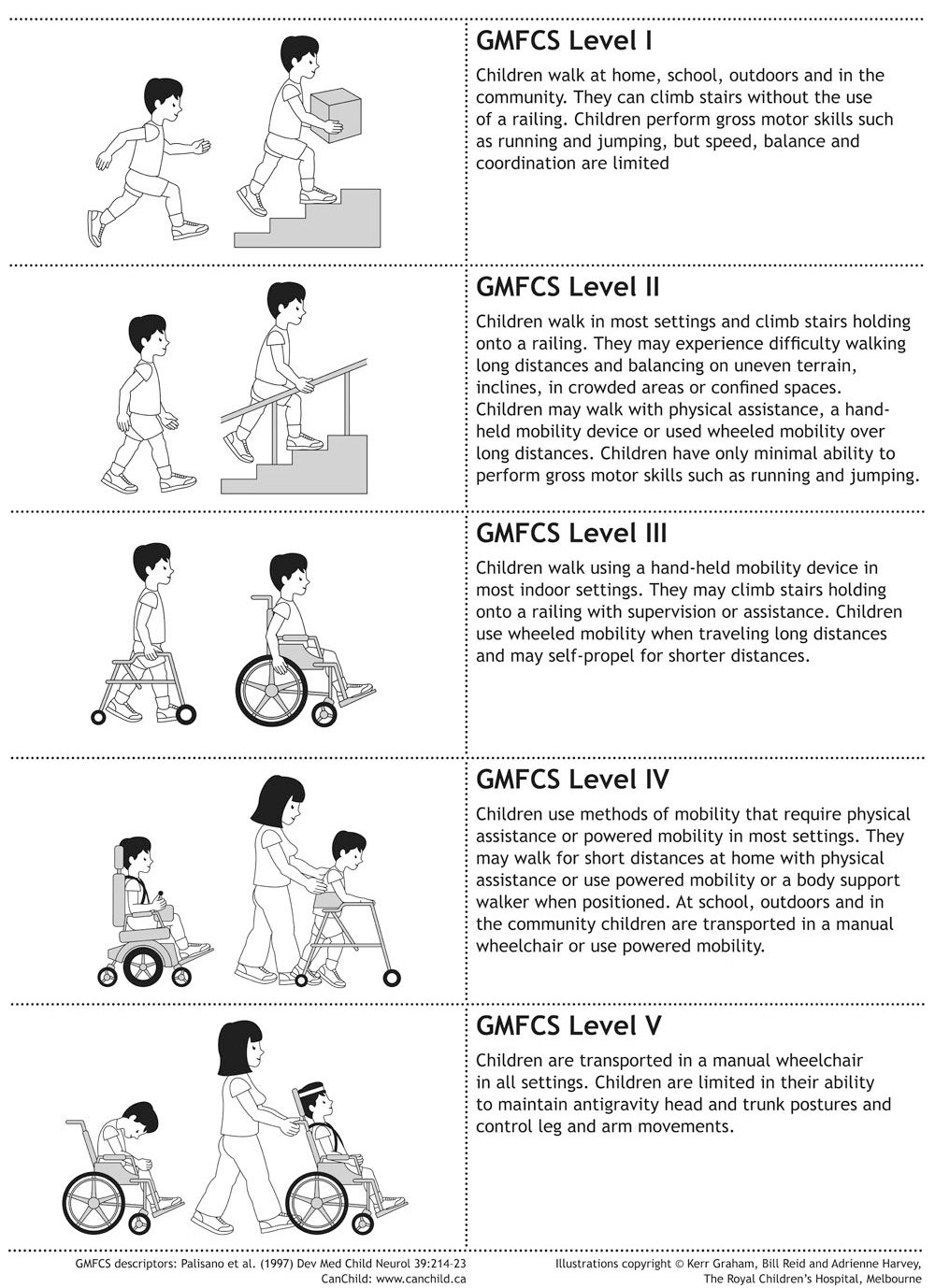
GMFCS E & R between 12th and 18th birthday: Descriptors and illustrations
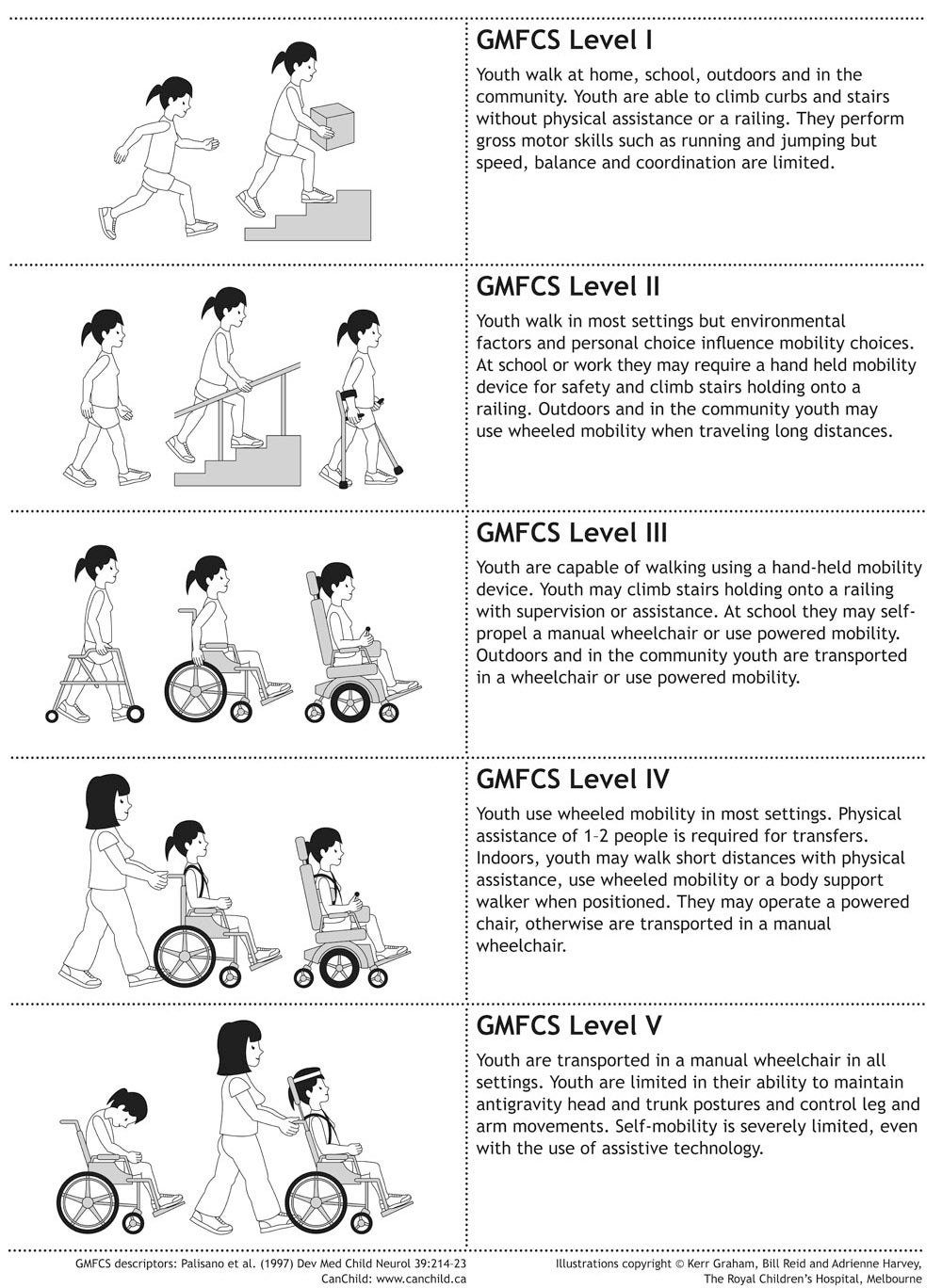
GMFCS E&R levels between 6th - 12th birthday


Children walk at home, school, outdoors and in the community. They can climb stairs without the use of a railing. Children perform gross motor skills such as running and jumping, but speed, balance and coordination are limited.

Children walk in most settings and climb stairs holding onto a railing. They may experience difficulty walking long distances and balancing on uneven terrain, inclines, in crowded areas or confined spaces. Children may walk with physical assistance, a hand-held mobility device or used wheeled mobility over long distances. Children have only minimal ability to perform gross motor skills such as running and jumping.

Children walk using a hand-held mobility device in most indoor-settings. They may climb stairs holding onto a railing with supervision or assistance. Children use wheeled mobility when traveling long distances and may self-propel for shorter distances.
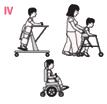
Children use methods of mobility that require physical assistance or powered mobility in most settings. They maywalk for short distances at home with physical assistance or use powered mobility or a body support walker when positioned. At school, outdoors and in the community children are transported in a manual wheelchair or use powered mobility.
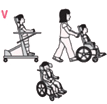
Children are transported in a manual wheelchair in all settings. Children are limited in their ability to maintain antigravity head and trunk postures and control leg arm movements.
It is important to recognise the diversity in CP cases and to remember that
every child with CP is unique, requiring personalised, tailored care.
References:
- Reddihough DS and Collins KJ. The epidemiology and causes of cerebral palsy. Aust J Physiother. 2003;49(1):7-12.
- Prasad AN and Prasad C. Genetic evaluation of the floppy infant. Semin Fetal Neonatal Med. 2011;(16):99-108.
- Palisano R et al. Development and reliability of a system to classify gross motor function in children with cerebral palsy. Dev Med Child Neurol. 1997;39(4):214-23.